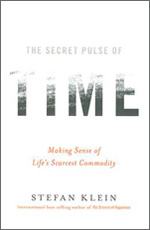"A change of scenery can transport us into a different time frame. The Japanese have known that for quite a long time, and have put this knowledge to good use. Tea ceremonies are designed to enable guests to leave their everyday life behind when they enter a tea pavilion, which exists solely for the preparation and enjoyment of tea. Often, the entrance is nothing more than a tiny opening through which they have to squeeze. This uncomfortable entrance once forced the samurai to lay down their swords. Today, cell phones remain outside. Visitors enter a space in which the laws and rivalries of everyday life do not apply.
"Everything in the tearoom is kept as simple as possible, yet the ensemble conveys perfect harmony. There are a few mats on the floor — nothing else — and the small grouping of flowers is artistically arranged to convey the impression that they have been put together by chance. The kettle is set up to warm the guests with its heat in the winter, yet to have the heat diverted to the outside in the summer. The steam from the kettle sounds like the rustling of treetops.
"On the face of it, nothing out of the ordinary occurs in the tearoom. The host draws water, makes a fire, carries in the teapot and the bowl, and cleans and brews the tea. The only feature that seems unusual to Western observers is the use of a bamboo utensil to whisk the mixture of powdered tea and water, which gives off an emerald green shimmer. Every step, every motion of the tea master is carefully calculated, so harmonious yet so bristling with inner excitement that the guests are riveted to the spectacle. There is not a dull moment. The folding of the cloth that the master wears on his belt, the skillful manner in which he takes the tea out of the tin, the irregular shape of the bowl: every detail is magnified and becomes an event in itself. A complete tea ceremony lasts up to six hours, during which time an outsider feels that very little is happening. Time is diluted to an extreme.
"The guests are so engrossed in the ceremony that they pay no heed to the time. Because they are used to preparing and drinking tea in a matter of minutes rather than hours, they apply this gauge to the tea ceremony as well. As the guests enter the tearoom, at a snail's pace, they leave behind their accustomed notion of time.
"The Japanese tradition regards the tea ceremony as an opportunity to turn inward and embark on a path of enlightenment. Western observers see it as a way to sharpen the senses and heighten their perception of time.
"The tea ceremony stands as a reminder that life needn't be a race against time, and that we can exercise control over how we experience the minutes and hours that make up our days. And it shows one way to create an oasis in time. Leisure time enables us to reestablish our sense of the present, far from plans for the future and worries about the past. Each individual moment can be savored as it occurs."
